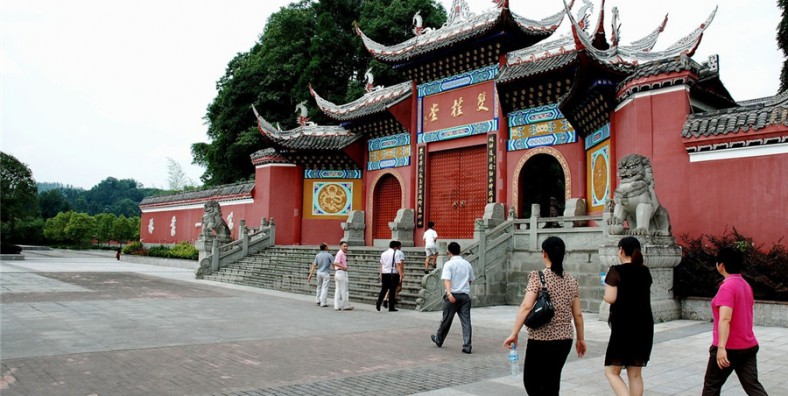
Shuanggui Temple in Liangping District, Chongqing

Attractions Overview
In 1983, it was designated by the State Council as a national key Buddhist temple in Han nationality areas. In 2013, it was selected as a national key cultural relic protection unit, and in 2015, it was selected as a new Chongqing Bayu 12-view cultural resort.
Chinese Name: 双桂堂
English Name: Shuanggui Temple
Type: Cultural Scenic Area, Chongqing famous spots & Buddhist attractions
Best Time: All Year Around
Recommended Visiting Hours: 3-5 hours
Opening Hours:08:00 - 17:00
Ticket:10 yuan/person
Location: Wanzhushan, Jindai Town, Liangping District, Chongqing
Why is Shuanggui Temple so Special?
Shuangguitang has a high status in the Buddhist world and is honored as “the ancestral temple of Zen Buddhism in southwest China”. it has a prominent position in the Buddhist world in China and southeast Asia. the world calls it “the head of the southwest jungle”, “the first Zen forest” and “the giant of the clan”. Zhu Chan, a famous modern calligrapher and painter and Buddhist master, also served as the 10th abbot of Shuanggui Hall.
Temple characteristics
After the establishment of Shuanggui Hall, it was supported by successive emperors of the Qing Dynasty and continuously built for more than 200 years. During the period of the Republic of China, Shuanggui Hall was listed as “the first in the southwest jungle” for its magnificent scale, solemn hall, rich sutra collection and unique sculpture.
The main hall was expanded during the Guangxu period and took five years to complete. The 52 pillars supporting the main hall are three zhangs long and three feet in diameter. Each pillar weighs more than 20,000 jin and is transported out of the hall by manpower.
Treasure of cultural relics
There are 237 cultural relics preserved in Shuanggui Hall, including 61 famous calligraphy and paintings, 110 Buddha statues and 66 other Buddhist cultural relics. Among them, the most famous are bronze Buddha, bamboo Zen painting and jade Buddha, all of which are classified as national second and third class cultural relics. There are also precious cultural relics in the temple, including a Tibetan Sutra given by yongzheng emperor in the Qing Dynasty. There are four kinds of relics, including deaf, dumb, gongs and drums, and more than 72 stone carvings and inscriptions. There are also 106 pages of the “Beiye Sutra” written in Sanskrit in the 11th century and over 7,000 other Buddhist scriptures.
Origin of Temple Name
Shuangguitang is located in Wanzhushan, Jindai Town, 13km southwest of Liangping District City, Chongqing. It was originally named Fuguo Temple. It was renamed Shuangguitang because of its two ancient osmanthus trees. In the tenth year of Xianfeng (1860) of the Qing Dynasty, a gold belt was broken through the ground to build the relic temple. Therefore, it is also called Jindai Temple. However, the name of Shuangguitang has been used for more than 350 years.
Traffic information
Tourists from Chongqing’s main city to Shuangguitang can take the Chongqing-Wanzhou intercity high-speed train to Liangping South Station (21 pairs of trains per day, second-class 72 yuan) at the North Square of Chongqing North Station, and transfer to the shuttle bus after leaving the station for 10 minutes.













